FM 1
Short grass |
Fire spread is governed by fine, very porous, and continuous herbaceous fuels that have cured or are nearly cured. Fires are surface fires that move rapidly through the cured grass and associated material. Very little shrub or timber is present; generally less than one-third of the area. Grasslands and savanna are represented, along with stubble, grass-tundra, and grass-shrub combinations that meet the above area constraint. Annual and perennial grasses are included in this fuel model. |
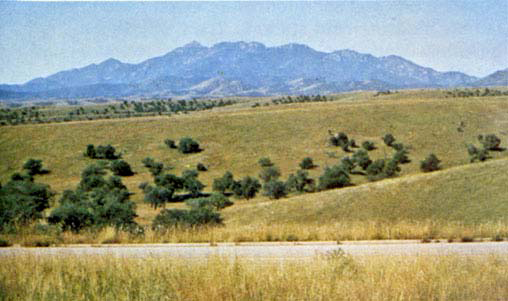
|
FM 2
Timber (grass and understory) |
Fire spread is primarily through fine herbaceous fuels, either curing or dead. These are surface fires where the herbaceous material, in addition to litter and dead/down stemwood from the open shrub or timber overstory, contributes to the fire intensity. Open shrub lands and pine stands or scrub oak stands that cover one-third to two-thirds of the area may generally fit this model; such stands may include clumps of fuels that generate higher intensities and that may produce firebrands. Some pinyon-juniper may be in this model. |
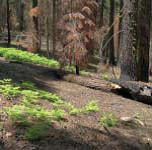
|
FM 3
Tall grass |
Fires in this fuel model are the most intense of the grass group and display high rates of spread under the influence of wind. Wind may drive fire into the upper heights of the grass and across standing water. Stands are tall, averaging about 3 feet (1 m), but considerable variation may occur. Approximately one-third or more of the stand is dead or cured and maintains the fire. Wild or cultivated grains that have not been harvested can be considered similar to tall prairie and marshland grasses. |
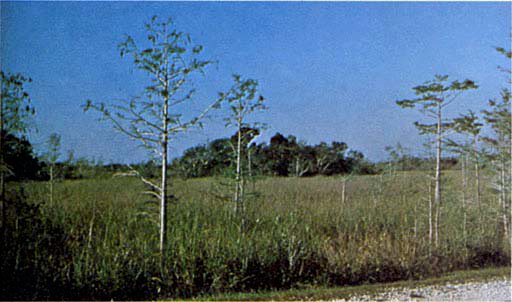
|
FM 4
Chaparral |
Fire intensity and fast-spreading fires involve the foliage and live and dead fine woody material in the crowns of a nearly continuous secondary overstory. Typical candidates are stands of mature shrubs, 6 or more feet tall, such as California mixed chaparral, the high pocosin along the east coast, the pinebarrens of New Jersey, or the closed jack pine stands of the north-central States. Besides flammable foliage, dead woody material in the stands significantly contributes to the fire intensity. Height of stands qualifying for this model depends on local conditions. A deep litter layer may also hamper suppression efforts. |
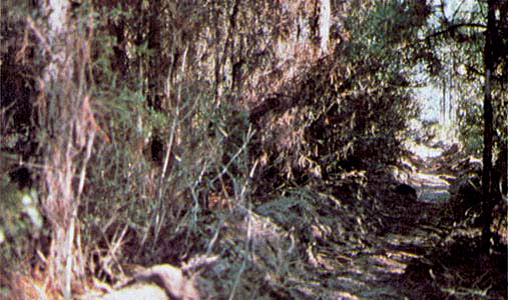
|
FM 5
Brush |
Fire is generally carried in the surface fuels that are made up of litter cast by the shrubs and the grasses or forbs in the understory. The fires are generally not very intense because surface fuel loads are light, the shrubs are young with little dead material, and the foliage contains little volatile material. Usually shrubs are short and almost totally cover the area. Young, green stands with no dead wood would qualify: laurel, vine maple, alder, or even chaparral, manzanita, or chamise. |

|
FM 6
Dormant brush, hardwood slash |
Fires carry through the shrub layer where the foliage is more flammable than fuel model 5, but this requires moderate winds (winds greater than 8 mi/h [13 km/h] at midflame height). Fire will drop to the ground at low wind speeds or at openings in the stand. The shrubs are older, but not as tall as shrub types of FM 4, nor do they contain as much fuel as FM 4. A broad range of shrub conditions is covered by this model. Fuel situations include intermediate stands of chamise (Adenostoma fasciculatum; also called greasewood), chaparral, oak brush, low pocosin, Alaskan spruce taiga, and shrub tundra. Even hardwood slash that has cured can be considered. Pinyon-juniper shrublands may be represented but may over-predict rate of spread except at high winds (like 20 mi/h [32 km/h] at the 20-foot level). |
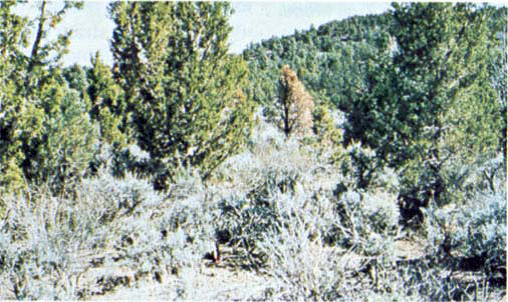
|
FM 7
Southern rough |
Fires burn through the surface and shrub strata with equal ease and can occur at higher dead fuel moisture contents because of the flammability of live foliage and other live material. Stands of shrubs are generally between 2 and 6 feet (0.6 and 1.8 m) high. Palmetto-gallberry understory–pine overstory sites are typical, and low pocosins may be represented. Black spruce–shrub combinations in Alaska may also be represented. |
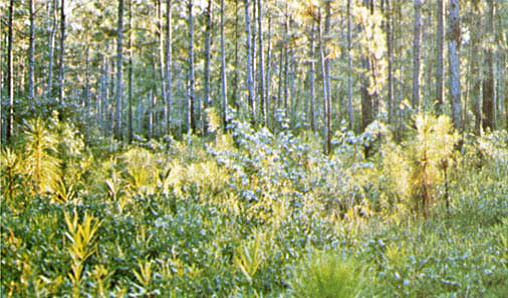
|
FM 8
Closed timber litter |
Slow-burning ground fires with low flame lengths are generally the case, although the fire may encounter an occasional “jackpot” or heavy fuel concentration that can flare up. Only under severe weather conditions involving high temperatures, low humidity, and high winds do the fuels pose fire hazards. Closed canopy stands of short-needle conifers or hardwoods that have leafed out support fire in the compact litter layer. Because little undergrowth is present in the stand, this layer is mainly needles, leaves, and occasionally twigs. Representative conifer types are white pine, lodgepole pine, spruce, fir, and larch. |
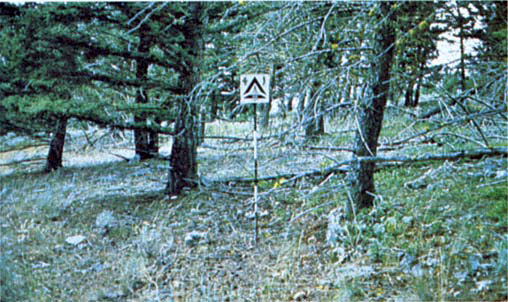
|
FM 9
Hardwood litter |
Fires run through the surface litter faster than FM 8 and have longer flame heights. Both long-needle conifer stands and hardwood stands, especially the oak-hickory types, are typical. Fall fires in hardwoods are predictable, but high winds will actually cause higher rates of spread than predicted because of spotting caused by rolling and blowing leaves. Closed stands of long-needled pines, such as Ponderosa pines, Jeffrey pines, and red pines, or southern pine plantations are grouped in this model. Concentrations of dead/down woody material contribute to possible torching of trees, spotting, and crowning. |
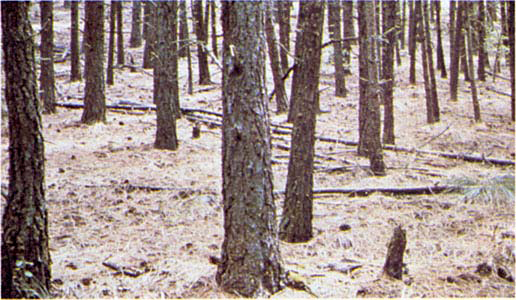
|
FM 10
Timber (litter and understory) |
The fires burn in the surface and ground fuels with greater fire intensity than the other timber litter models. Dead/down fuels include greater quantities of 3-inch (7.6-cm) or larger Iimbwood resulting from overmaturity or natural events that create a large load of dead material on the forest floor. Crowning out, spotting, and torching of individual trees are more frequent in this fuel situation, leading to potential fire control difficulties. Any forest type may be considered if heavy down material is present; examples are insect- or disease-ridden stands, wind-thrown stands, over-mature situations with deadfall, and aged light thinning or partial-cut slash. |
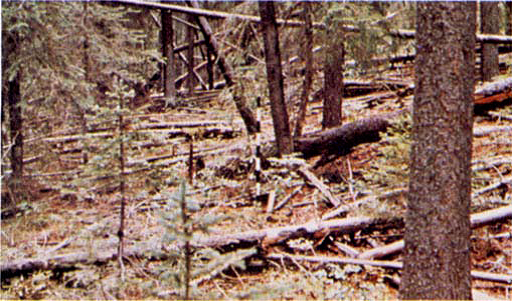
|
FM 11
Light logging slash |
Fires are fairly active in the slash and herbaceous material intermixed with the slash. The spacing of the rather light fuel load, shading from overstory, or the aging of the fine fuels can contribute to limiting the fire potential. Light partial cuts or thinning operations in mixed conifer stands, hardwood stands, and southern pine harvests are considered. Clear-cut operations generally produce more slash than represented here. The less-than-3-inch (7.6-cm) material load is less than 12 tons per acre (5.4 tons/hectare). The greater-than-3-inch (7.6-cm) is represented by not more than 10 pieces, 4 inches (10.2 cm) in diameter, along a 50-foot (15-m) transect. |
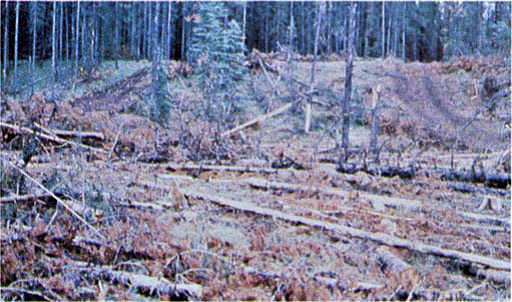
|
FM 12
Medium logging slash |
Rapidly spreading fires with high intensities capable of generating firebrands can occur. When fire starts, it is generally sustained until a fuel break or change in fuels is encountered. The visual impression is dominated by slash, and much of it is less than 3 inches (7.6 cm) in diameter. The fuels total less than 35 tons per acre (15.6 tons/hectare) and seem well distributed. Heavily thinned conifer stands, clear-cut, and medium or heavy partial cuts are represented. The material larger than 3 inches (7.6 cm) is represented by encountering 11 pieces, 6 inches (15.2 cm) in diameter, along a 50-foot (15-m) transect. |
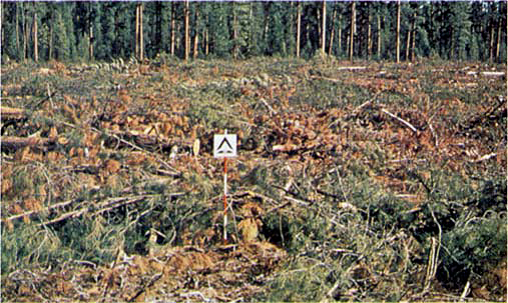
|
FM 13
Heavy logging slash |
Fire is generally carried across the area by a continuous layer of slash. Large quantities of material larger than 3 inches (7.6 cm) are present. Fires spread quickly through the fine fuels and intensity builds up more slowly as the large fuels start burning. Active flaming is sustained for long periods and a wide variety of firebrands can be generated. Firebrands contribute to spotting problems as the weather conditions become more severe. Clear-cuts and heavy partial-cuts in mature and over-mature stands are depicted, where the slash load is dominated by the greater-than-3-inch (7.6-cm) diameter material. The total load may exceed 200 tons per acre (89.2 tons/hectare) but fuel less than 3 inches (7.6-cm) is generally only 10 percent of the total load. Situations where the slash still has “red” needles attached but the total load is lighter, more like FM 12, can be represented because of the earlier high intensity and quicker area involvement. |
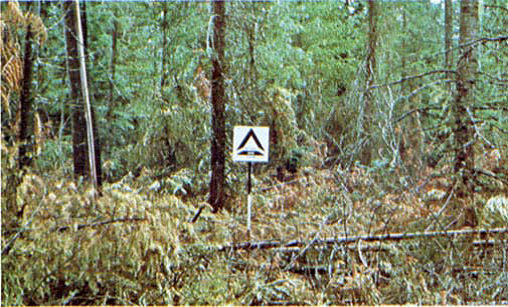
|
NB1 (91)
Urban/developed |
Fuel model NB1 consists of land covered by urban and suburban development. To be called NB1, the area under consideration must not support wildland fire spread. In some cases, areas mapped as NB1 may experience structural fire losses during a wildland fire incident; however, structure ignition in those cases is either house-to-house or by firebrands, neither of which is directly modeled using fire behavior fuel models. If sufficient fuel vegetation surrounds structures so that wildland fire spread is possible, then choose a fuel model appropriate for the wildland vegetation (rather than NB1). |
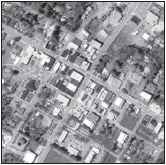
|
NB2 (92)
Snow/Ice |
Land covered by permanent snow or ice is included in NB2. Areas covered by seasonal snow can be mapped to two different fuel models: use NB2 when the area is snow-covered, and use another fuel model in the fire season. |
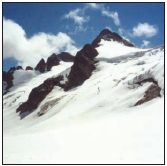
|
NB3 (93)
Agricultural |
Fuel model NB3 is agricultural land maintained in a nonburnable condition; examples include irrigated annual crops, mowed or tilled orchards, and so forth.
However, there are many agricultural areas that are not kept in a nonburnable condition. For example, grass is often allowed to grow beneath vines or orchard trees, and wheat or similar crops are allowed to cure before harvest; in those cases, use a fuel model other than NB3. |
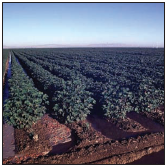
|
NB8 (98)
Open Water |
NB8 comprises land covered by open bodies of water such as lakes, rivers, and oceans. |
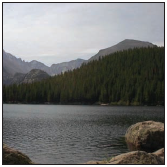
|
NB9 (99)
Bare Ground |
Fuel model NB9 comprises land devoid of enough fuel to support wildland fire spread. Examples of such areas include gravel pits, arid deserts with little vegetation, sand dunes, rock outcroppings, and beaches. |
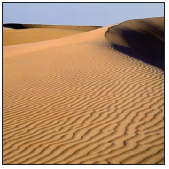
|
GR1 (101)
Short, Sparse, Dry Climate Grass |
The primary carrier of fire in GR1 is sparse grass, though small amounts of fine dead fuel may be present. The grass in GR1 is generally short, either naturally or by grazing, and may be sparse or discontinuous. The moisture of extinction of GR1 is indicative of a dry climate fuel bed, but GR1 may also be applied in high-extinction-moisture fuel beds because in both cases predicted spread rate and flame length are low compared to other GR models. |
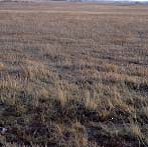
|
GR2 (102)
Low Load, Dry Climate Grass
|
The primary carrier of fire in GR2 is grass, though small amounts of fine dead fuel may be present. Load is greater than GR1, and the fuel bed may be more continuous. Shrubs, if present, do not affect fire behavior. |
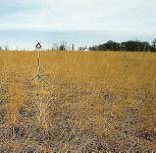
|
GR3 (103)
Low Load, Very Coarse, Humid Climate Grass
|
The primary carrier of fire in GR3 is continuous, coarse, humid-climate grass. Grass and herb fuel load is relatively light; fuel bed depth is about 2 feet. Shrubs are not present in significant quantity to affect fire behavior. |
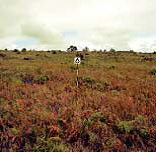
|
GR4 (104)
Moderate Load, Dry Climate Grass
|
The primary carrier of fire in GR4 is continuous, dry-climate grass. Load and depth are greater than GR2; fuel bed depth is about 2 feet. |
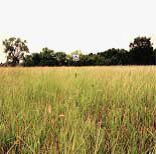
|
GR5 (105)
Low Load, Humid Climate Grass
|
The primary carrier of fire in GR5 is humid-climate grass. Load is greater than GR3 but depth is lower—about 1 to 2 feet. |
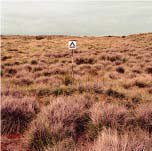
|
GR6 (106)
Moderate Load, Humid Climate Grass
|
The primary carrier of fire in GR6 is continuous humid-climate grass. Load is greater than GR5 but depth is about the same. Grass is less coarse than GR5.
|

|
GR7 (107)
High Load, Dry Climate Grass
|
The primary carrier of fire in GR7 is continuous dry-climate grass. Load and depth are greater than GR4. Grass is about 3 feet tall. |
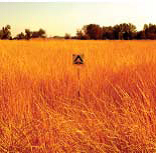
|
GR8 (108)
High Load, Very Coarse, Humid Climate Grass
|
The primary carrier of fire in GR8 is continuous, very coarse, humid-climate grass. Load and depth are greater than GR6. Spread rate and flame length can be extreme if grass is fully cured. |

|
GR9 (109)
Very High Load, Humid Climate Grass
|
The primary carrier of fire in GR9 is dense, tall, humid-climate grass. Load and depth are greater than GR8, about 6 feet tall. Spread rate and flame length can be extreme if grass is fully or mostly cured. |

|
GS1 (121)
Low Load, Dry Climate Grass-Shrub
|
The primary carrier of fire in GS1 is grass and shrubs combined. Shrubs are about 1 foot high; grass load is low. Spread rate is moderate; flame length is low. Moisture of extinction is low. |

|
GS2 (122)
Moderate Load, Dry Climate Grass-Shrub
|
The primary carrier of fire in GS2 is grass and shrubs combined. Shrubs are 1 to 3 feet high, grass load is moderate. Spread rate is high; flame length moderate. Moisture of extinction is low. |

|
GS3 (123)
Moderate Load, Humid Climate Grass-Shrub
|
The primary carrier of fire in GS3 is grass and shrubs combined. Moderate grass/shrub load, average grass/shrub depth less than 2 feet. Spread rate is high; flame length moderate. Moisture of extinction is high. |

|
GS4 (124)
High Load, Humid Climate Grass-Shrub
|
The primary carrier of fire in GS4 is grass and shrubs combined. Heavy grass/shrub load, depth greater than 2 feet. Spread rate high; flame length very high. Moisture of extinction is high. |
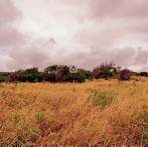
|
SH1 (141)
Low Load Dry Climate Shrub
|
The primary carrier of fire in SH1 is woody shrubs and shrub litter. Low shrub fuel load, fuel bed depth about 1 foot; some grass may be present. Spread rate is very low; flame length very low. |

|
SH2 (142)
Moderate Load Dry Climate Shrub
|
The primary carrier of fire in SH2 is woody shrubs and shrub litter. Moderate fuel load (higher than SH1), depth about 1 foot, and no grass fuel present. Spread rate is low; flame length low. |
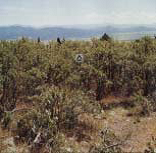
|
SH3 (143)
Moderate Load, Humid Climate Shrub
|
The primary carrier of fire in SH3 is woody shrubs and shrub litter. Moderate shrub load, possibly with pine overstory or herbaceous fuel, fuel bed depth 2 to 3 feet. Spread rate is low; flame length low. |
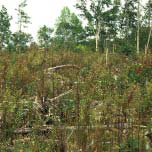
|
SH4 (144)
Low Load, Humid Climate Timber-Shrub
|
The primary carrier of fire in SH4 is woody shrubs and shrub litter. Low to moderate shrub and litter load, possibly with pine overstory, fuel bed depth about 3 feet. Spread rate is high; flame length moderate. |
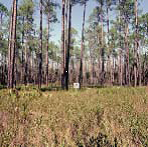
|
SH5 (145)
High Load, Dry Climate Shrub
|
The primary carrier of fire in SH5 is woody shrubs and shrub litter. Heavy shrub load, depth 4-6 feet. Spread rate very high; flame length very high. Moisture of extinction is high. |

|
SH6 (146)
Low Load, Humid Climate Shrub
|
The primary carrier of fire in SH6 is woody shrubs and shrub litter. Dense shrubs, little or no herbaceous fuel, fuel bed depth about 2 feet. Spread rate is high; flame length high. |
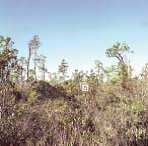
|
SH7 (147)
Very High Load, Dry Climate Shrub
|
The primary carrier of fire in SH7 is woody shrubs and shrub litter. Very heavy shrub load, depth 4 to 6 feet. Spread rate lower than SH5, but flame length similar. Spread rate is high; flame length very high. |
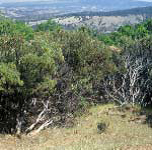
|
SH8 (148)
High Load, Humid Climate Shrub
|
The primary carrier of fire in SH8 is woody shrubs and shrub litter. Dense shrubs, little or no herbaceous fuel, fuel bed depth about 3 feet. Spread rate is high; flame length high. |
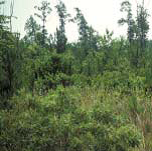
|
SH9 (149)
Very High Load, Humid Climate Shrub
|
The primary carrier of fire in SH9 is woody shrubs and shrub litter. Dense, finely branched shrubs with significant fine dead fuel, about 4 to 6 feet tall; some herbaceous fuel may be present. Spread rate is high, flame length very high. |
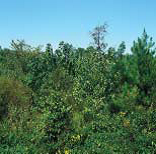
|
TU1 (161)
Low Load Dry Climate Timber-Grass-Shrub
|
The primary carrier of fire in TU1 is low load of grass and/or shrub with litter. Spread rate is low; flame length low. |
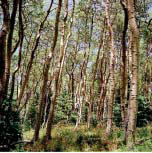
|
TU2 (162)
Moderate Load, Humid Climate Timber-Shrub |
The primary carrier of fire in TU2 is moderate litter load with shrub component. High extinction moisture. Spread rate is moderate; flame length low. |
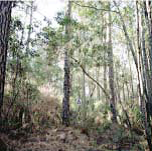
|
TU3 (163)
Moderate Load, Humid Climate Timber-Grass-Shrub |
The primary carrier of fire in TU3 is moderate forest litter with grass and shrub components. Extinction moisture is high. Spread rate is high; flame length moderate. |
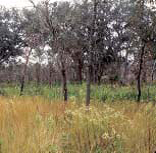
|
TU4 (164)
Dwarf Conifer With Understory |
The primary carrier of fire in TU4 is short conifer trees with grass or moss understory. Spread rate is moderate; flame length moderate. |
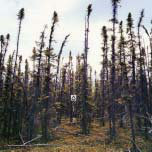
|
TU5 (165)
Very High Load, Dry Climate Timber-Shrub
|
The primary carrier of fire in TU5 is heavy forest litter with a shrub or small tree understory. Spread rate is moderate; flame length moderate. |
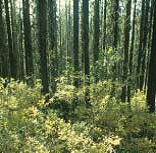
|
TL1 (181)
Low Load Compact Conifer Litter
|
The primary carrier of fire in TL1 is compact forest litter. Light to moderate load, fuels 1 to 2 inches deep. May be used to represent a recently burned forest. Spread rate is very low; flame length very low. |

|
TL2 (182)
Low Load Broadleaf Litter
|
The primary carrier of fire in TL2 is broadleaf (hardwood) litter. Low load, compact broadleaf litter. Spread rate is very low; flame length very low. |
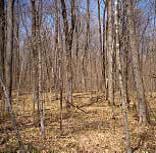
|
TL3 (183)
Moderate Load Conifer Litter |
The primary carrier of fire in TL3 is moderate-load conifer litter, light load of coarse fuels. Spread rate is very low; flame length low. |
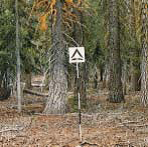
|
TL4 (184)
Small downed logs |
The primary carrier of fire in TL4 is moderate-load fine litter and coarse fuels; includes small-diameter downed logs. Spread rate is low; flame length low. |
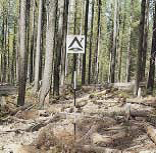
|
TL5 (185)
High Load Conifer Litter |
The primary carrier of fire in TL5 is high-load conifer litter, light slash, or mortality fuel. Spread rate is low; flame length low. |
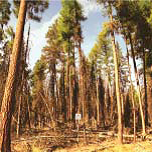
|
TL6 (186)
Moderate Load Broadleaf Litter |
The primary carrier of fire in TL6 is moderate-load broadleaf litter, less compact than TL2. Spread rate is moderate; flame length low. |
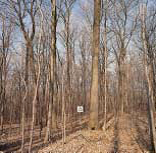
|
TL7 (187)
Large Downed Logs |
The primary carrier of fire in TL7 is heavy-load forest litter; includes larger diameter downed logs. Spread rate low; flame length low. |
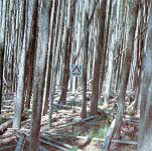
|
TL8 (188)
Long-Needle Litter |
The primary carrier of fire in TL8 is moderate-load, long-needle pine litter. May include a small amount of herbaceous load. Spread rate is moderate; flame length low. |

|
TL9 (189)
Very High Load Broadleaf Litter |
The primary carrier of fire in TL9 is very-high-load, fluffy broadleaf litter. TL9 can also be used to represent heavy needle drape. Spread rate is moderate; flame length moderate. |
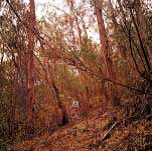
|
SB1 (201)
Low Load Activity Fuel |
The primary carrier of fire in SB1 is light dead and down activity fuel. Fine fuel load is 10 to 20 tons/acre, weighted toward fuels 1 to 3 inches in diameter. Depth is less than 1 foot. Spread rate is moderate; flame length low. |

|
SB2 (202)
Moderate Load Activity Fuel or Low Load Blowdown
|
The primary carrier of fire in SB2 is moderate dead and down activity fuel or light blowdown. Fine fuel load is 7 to 12 tons/acre, evenly distributed across the size ranges of 0 to 0.25, 0.25 to 1, and 1 to 3 inches in diameter. Depth is about 1 foot. Blowdown is scattered, with many trees still standing. Spread rate is moderate; flame length moderate. |

|
SB3 (203)
High Load Activity Fuel or Moderate Load Blowdown |
The primary carrier of fire in SB3 is heavy dead and down activity fuel or moderate blowdown. Fine fuel load is 7 to 12 tons/acre, weighted toward 0 to 0.25 inches in diameter. Depth is more than 1 foot. Blowdown is moderate; trees compacted to near the ground. Spread rate is high; flame length high. |
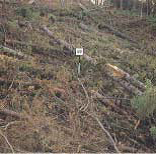
|
SB4 (204)
High Load Blowdown |
The primary carrier of fire in SB4 is heavy blowdown fuel. Blowdown is total, fuel bed not compacted, most foliage and fine fuel still attached to blowdown. Spread rate very high; flame length very high. |
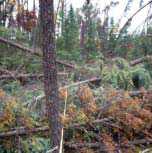
|
























































